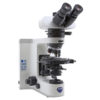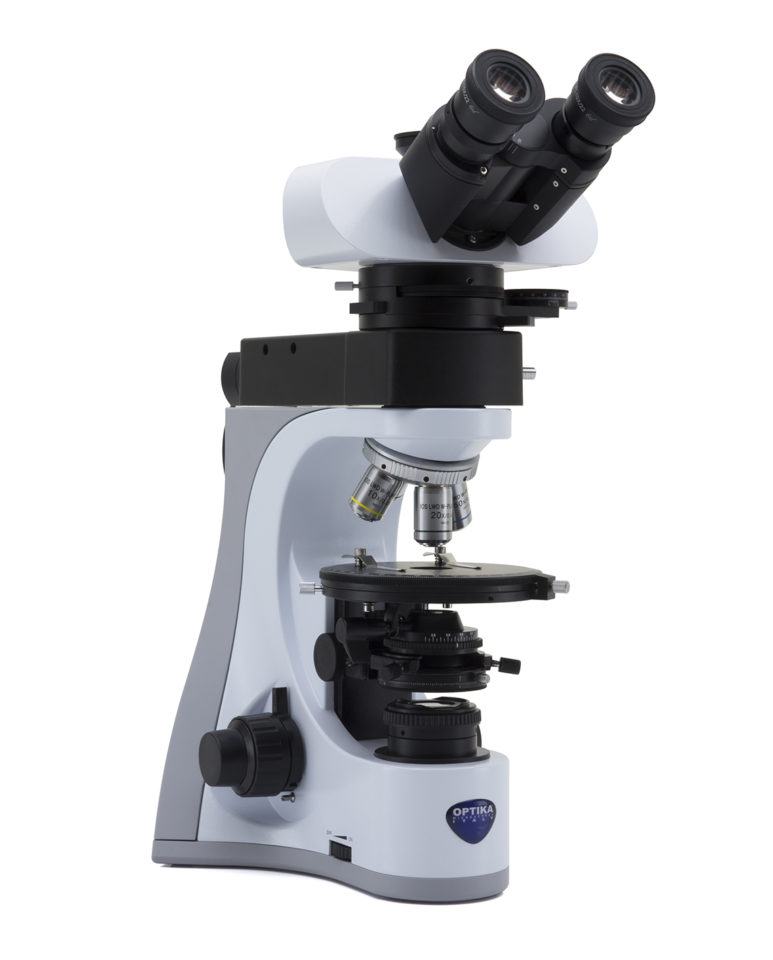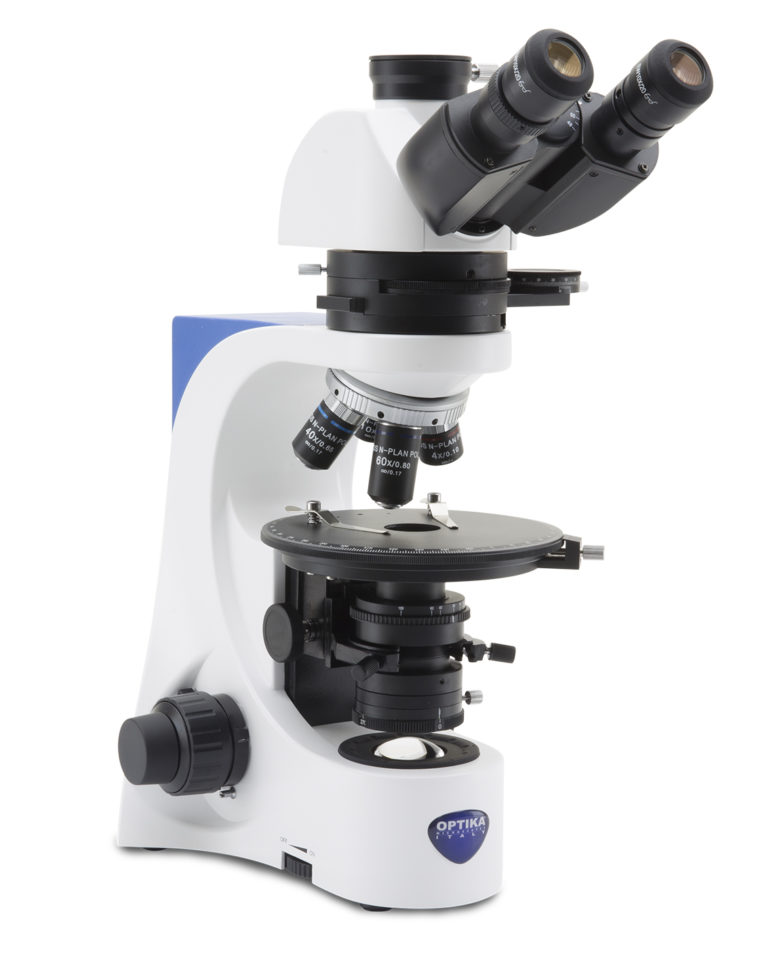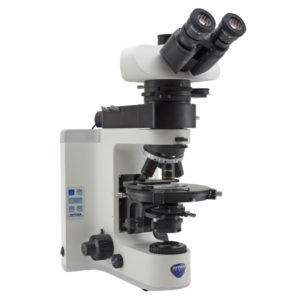POLARIZED LIGHT
The polarized light microscope is designed to observe specimens that are visible primarily due to their optical anisotropic or birefringent features. Polarized light microscopy is perhaps best known for its applications in the geological sciences, which focusses primarily on the study of minerals in rock thin sections. However, a wide variety of other materials can be examined in polarized light, including both natural and industrial minerals, concrete, ceramics, mineral fibers, polymers, starch, wood, urea. The technique can be used both qualitatively and quantitatively with success, and is an outstanding tool for the materials sciences, geology, chemistry, biology, metallurgy, and even diagnostic (gout analysis).

B-383POL - Polarizing Microscope
Model: B-383POL
Upright microscope for brightfield and polarizing light observations with strain-free IOS N-PLAN POL objectives. Complete of polarizer and analyzer filters, Bertrand lens for conoscopic observation, compensator plates and high-precision rotatable stages. It comes with the exclusive X-LED3 illumination system to deliver bright and clear images, along with all the accessories to perform accurate polarization analysis in biology and materials science.

B-510POL - Polarizing Microscope
Model: B-510POL
Advanced routine laboratory microscope for transmitted light in brightfield and polarized light observations with strain-free IOS W-PLAN POL objectives. Complete of polarizer and analyzer filters, Bertrand lens for conoscopic observation, compensator plates and high-precision rotatable stages. It comes with the exclusive X-LED3 illumination system to deliver bright and clear images, along with all the accessories to perform accurate polarization analysis in biology and materials science.
Model: B-510POL-I
Advanced routine laboratory microscope for brightfield and polarized light observations in transmitted and incident light with strain-free IOS LWD W-PLAN POL objectives. Complete of polarizer and analyzer filters, Bertrand lens for conoscopic observation, compensator plates and high-precision rotatable stages. It comes with the exclusive X-LED3 illumination system to deliver bright and clear images, along with all the accessories to perform accurate polarization analysis in biology and materials science.

B-1000POL - Polarizing Microscope
Model: B-1000POL
The modular OPTIKA B-1000 is available with transmitted polarized light, helping you working in a comfortable way during extended periods of use and performing reliable, accurate and rapid diagnosis benefiting from modularity, which gives the chance to create customized configurations tailored on customer needs. Versatile, robust, durable and sturdy, B-1000 offers premium quality optics, the state-of-the-art, exclusive X-LED8 (8 W) illumination system, designed by OPTIKA and the Koehler diaphragm. B-1000 gives multiple options as manual or motorized configuration.
Model: B-1000POL-I
The modular OPTIKA B-1000 is available with transmitted and incident polarized light, helping you working in a comfortable way during extended periods of use and performing reliable, accurate and rapid diagnosis benefiting from modularity, which gives the chance to create customized configurations tailored on customer needs. Versatile, robust, durable and sturdy, B-1000 offers premium quality optics, the state-of-the-art, exclusive X-LED8 (8 W) illumination system, designed by OPTIKA and the Koehler diaphragm. B-1000 gives multiple options as manual or motorized configuration.
Some detailed pictures and/or application examples showing the POLARIZING.
















